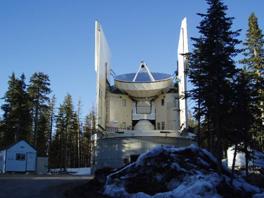Astrochemistry and Laboratory Astrophysics
.jpg)
The relative abundances of atoms and molecules in interstellar space are quite different from what we find on Earth. This has implications for the formation of solar systems and the beginning of biochemistry in space. In Astrochemistry the goal is to study chemical reactions occurring in space. When the species observed are not readily found on Earth, laboratory techniques must be developed to replicate the low-temperature conditions of interstellar space and enable a detailed study of chemical processes.
One of the primary objectives of the research conducted at Steward is to study the chemistry occurring in space using an approach that involves high resolution molecular spectroscopy in the laboratory, radio astronomical observations of cold gas clouds, and chemical modeling. We are interested in discovering which chemical compounds exist and in which types of interstellar sources, how they are formed, and how this impacts the origins of solar systems and planets, and ultimately life.
Faculty and Research Staff with a research interest in this area include:
- DeWayne Halfen - Cosmochemistry, Star Formation
- Lucy Ziurys - High-resolution molecular spectroscopy

The Ziurys Research group conducts their research in collaboration with the department of Chemistry. (Top Left) The Helix Nebula NGC 7293, the subject of a recent study. (Bottom Right) The Submillimeter Telescope, operated by the Arizona Radio Observatory on Mt. Graham used for the measurements.

For Public
Public events include our Monday Night Lecture Series, world-reknowned Astronomy Camp and Mt Lemmon Sky Center.

For Students
A good place to start if you want to become an undergrad major or grad student, or need to find our schedule of classes.

For Scientists
Find telescopes and instruments, telescope time applications, staff and mountain contacts, and faculty and staff scientific interests.




